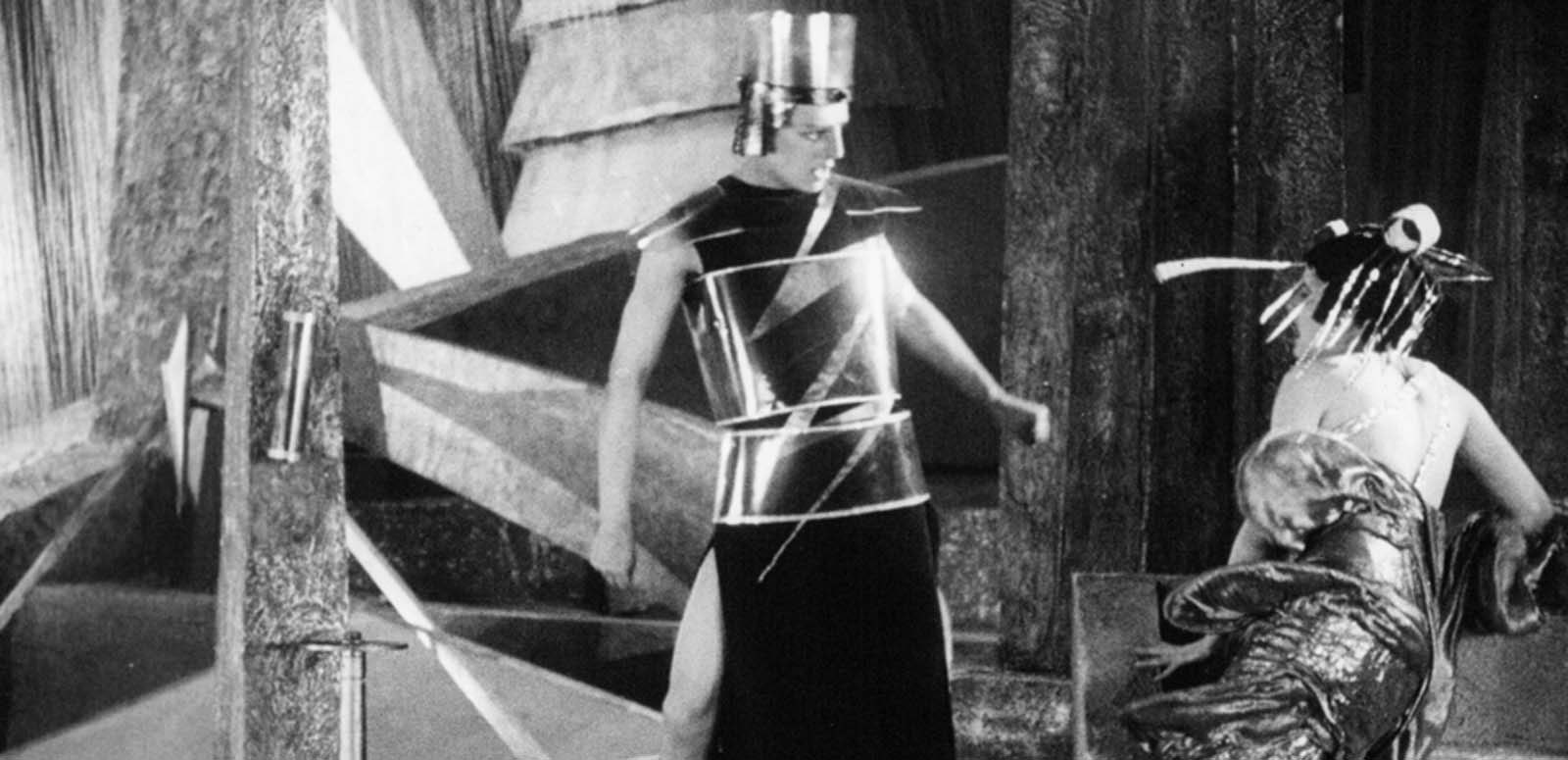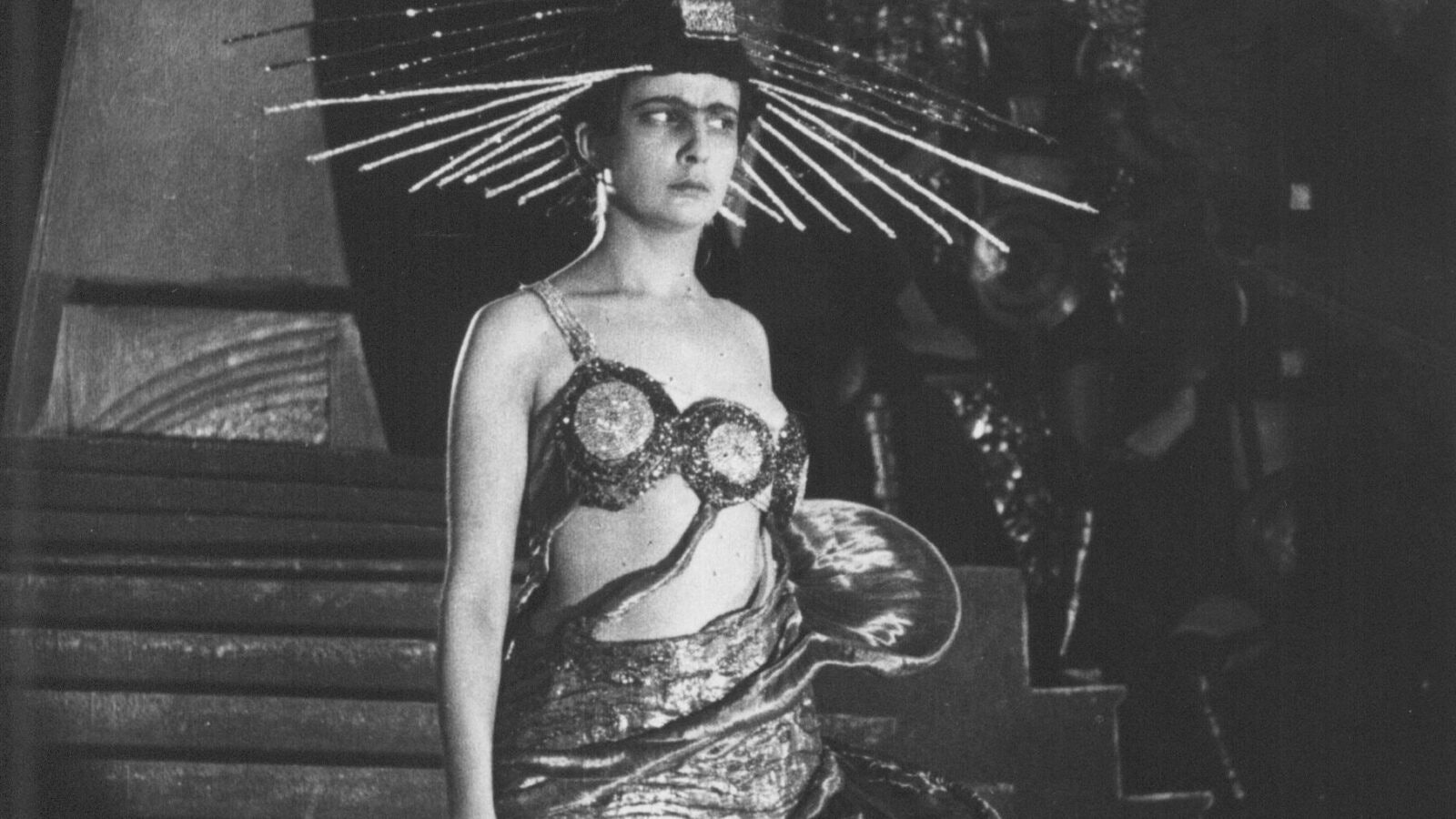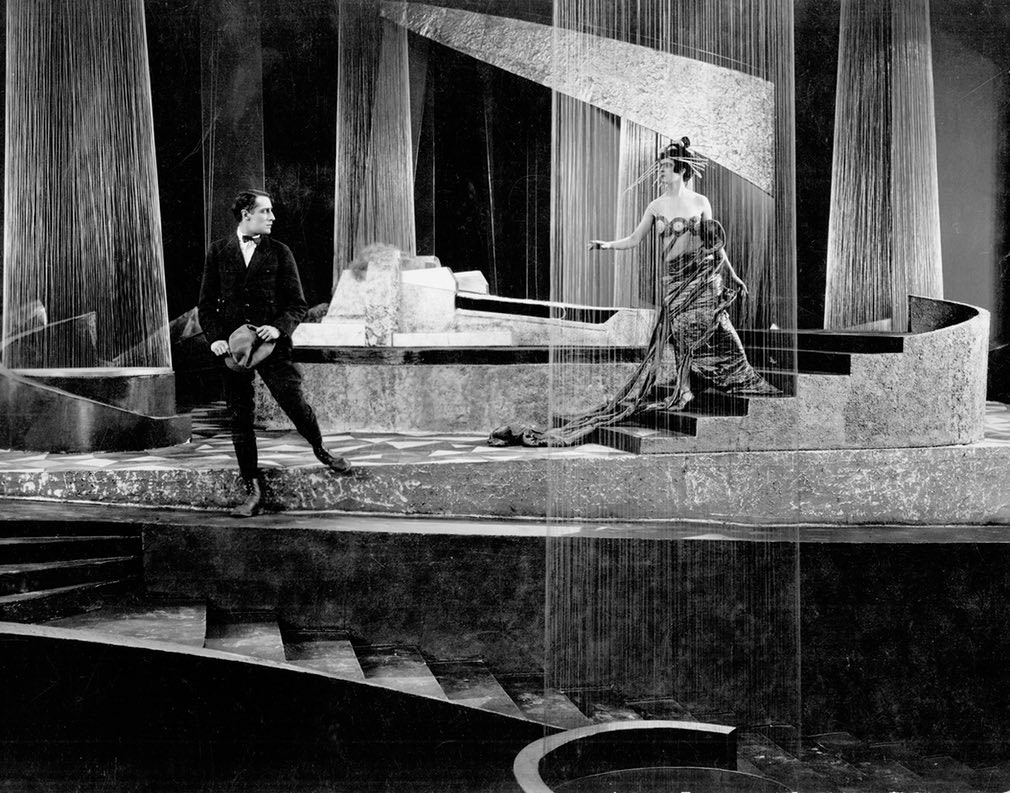
It’s unusual for a movie to have inspired creations as diverse as Fritz Lang's Metropolis and Roland Emmerich's Independence Day, but a movie celebrating its 100th birthday today can claim just such an accomplishment. Loosely based on a 1923 novel by Alexei Tolstoy, Yakov Protazanov's 1924 silent film Aelita: Queen of Mars is, in fact, secretly one of the most influential sci-fi movies of all time.
Set in 1921, the film follows a group of people in post-civil war Soviet Russia as they reckon with their place in a rebuilding society. The movie begins with people worldwide attempting to understand a mysterious radio message, and the scene immediately makes Queen of Mars’ influence obvious. Seventy years later, its visuals were echoed by Emmerich as countries around the globe received transmissions from Independence Day’s invaders, then later used Morse code to coordinate a united counter-offensive.
And much like Jeff Goldblum's Independence Day character, recently-divorced satellite engineer David Levinson, the main protagonist of Aelita, Los (Nikolai Tseretelli), is an engineer having issues with his Natasha (Valentina Kuindzhi). But while David is able to hack the transmission and save the day, Los merely daydreams of becoming a hero. Obsessed with going to Mars, the mysterious transmission leads him to flights of fancy as he imagines they have a celestial source.
It’s in these Martian sequences that Aelita’s impact on sci-fi film can really be observed. The Mars of Los' dreams is filled with constructivist sets and extravagant costumes, the latter designed by Cubo-Futurist artist Aleksandra Ekster, a Ukrainian colleague of Pablo Picasso. The costume’s oblique shapes, born of industrial materials like aluminum, acrylics, and steel, provided modern aesthetics that later appeared in the sets and costumes of Fritz Lang’s Metropolis and Woman in the Moon. Both were produced at Germany’s UFA Studios, where Protazanov had worked in the early 1920s before returning to Russia after the revolution.

Along with exploring the ups and downs of the reconstruction of Soviet society, Aelita used a sci-fi lens to explore why socialist uprisings happened, pre-dating Lang’s more well-known Metropolis by several years. Like Freder and Maria's salvation of the workers in Lang's iconic film, Los teams up with the alluring Aelita (Yuliya Solntseva) to lead a revolt against the elite Martian Elders, who live in luxury above the surface while the workers are enslaved underground. The framework of lower classes kept in bondage until they revolt against ruling elites continues to resonate in the sci-fi genre, and can be seen in films as diverse as George Lucas’ THX 1138 to Michael Bay’s The Island.
Aelita made it to the United States in 1929, and while its political message didn’t always inspire American sci-fi, its aesthetics often did. Preservationists, curators, and scholars have noted that Aelita’s over-the-top costumes and makeup influenced the look of the popular Flash Gordon serials of the 1930s, which became a touchstone in early American sci-fi. Visually, at least, Aelita and Ming the Merciless could easily exist on the same planet.
By the mid-century, films about Mars were often linked to the Red Scare — see Red Planet Mars and Invaders From Mars — but other aspects of Aelita, like the title character’s slinky costume, seductive personality, and even name, still resonated through the genre. In the low-budget 1951 flick Flight To Mars, for example, the planet’s inhabitants are on the brink of extinction due to the depletion of the mineral that keeps their life support systems running. After being held captive by the Martians, our heroes are aided by a scientist named Alita (Marguerite Chapman), who helps them escape.

Protazanov's unique style continued to influence films well into the 1980s, from a space opera revival of Flash Gordon to the low-budget queer sci-fi Liquid Sky, which New York Times writer J. Hoberman suggested had “a particularly Soviet quality,” noting that its “costumes, makeup, hairstyles, production design, and even the herky-jerky dances are also highly suggestive of Russia’s 1920s Constructivist avant-garde." He called it a "true ancestor" to Aelita.
Aelita, while popular at the Russian box office, failed to fulfill its producers’ dreams of making studio Mezhrabprom-Rus a major international player, and the film sank into obscurity as Soviet censorship tightened and the Cold War made appreciation of Russian art passe. But its innovative and modern style has stood the test of time, and today its impact can be properly appreciated as it continues to reverberate throughout sci-fi a century later.







